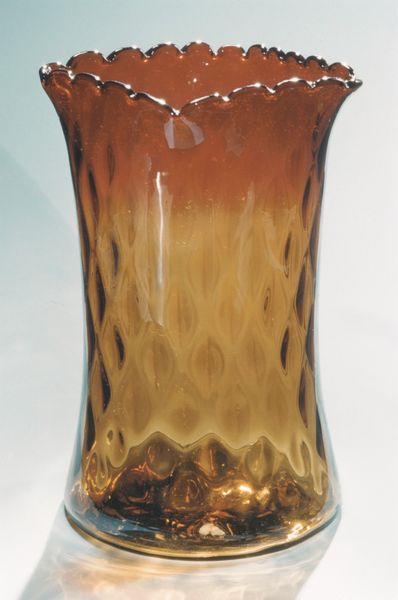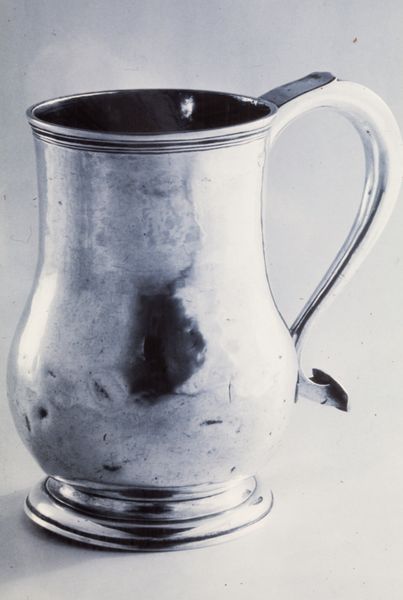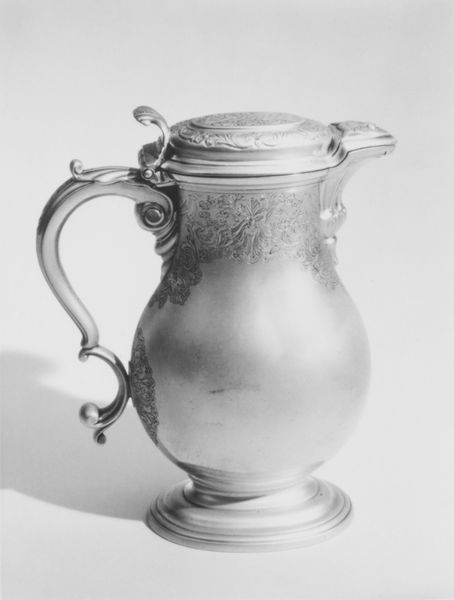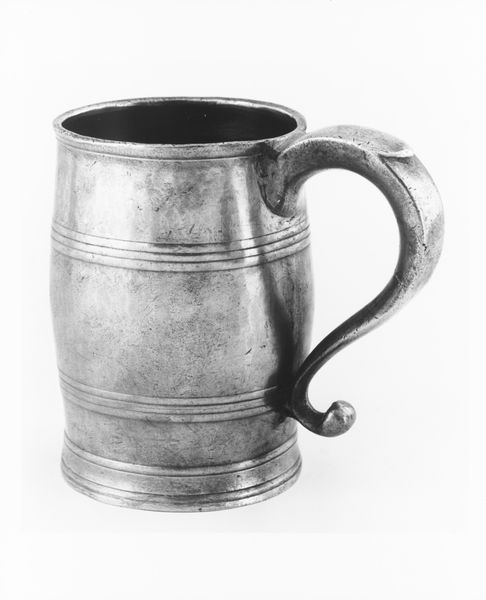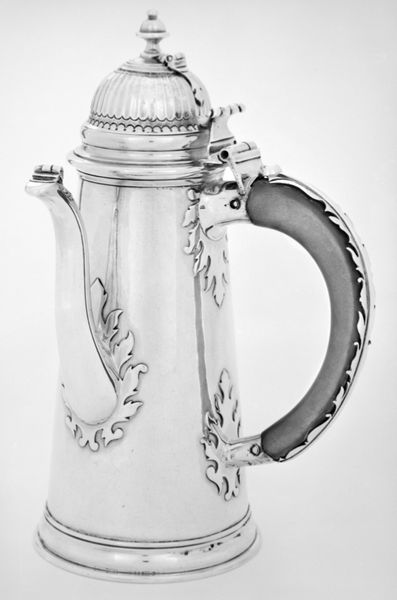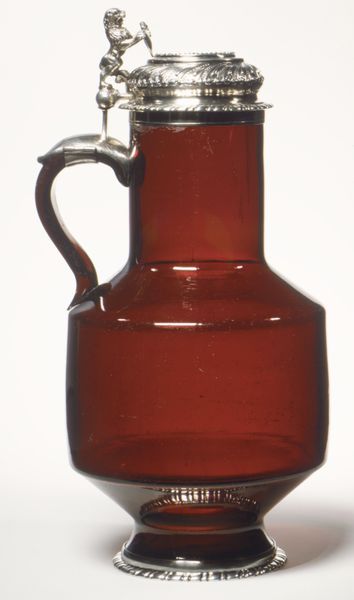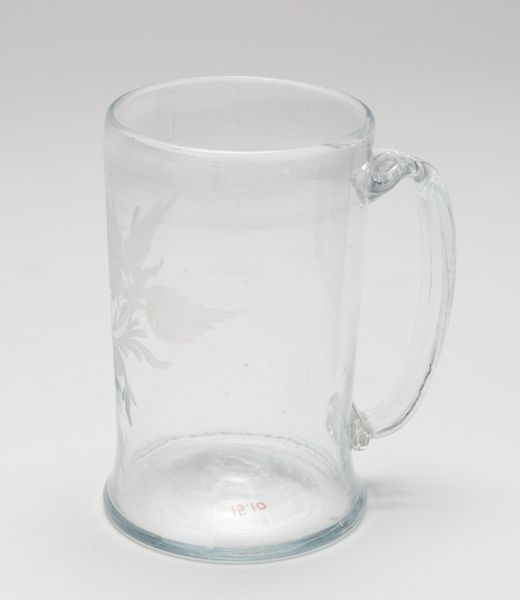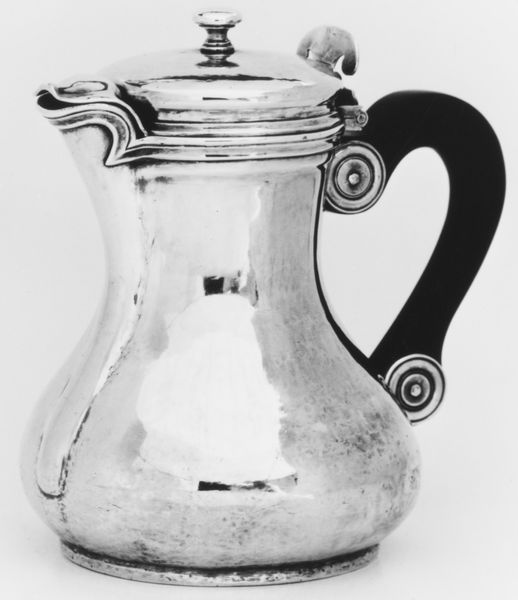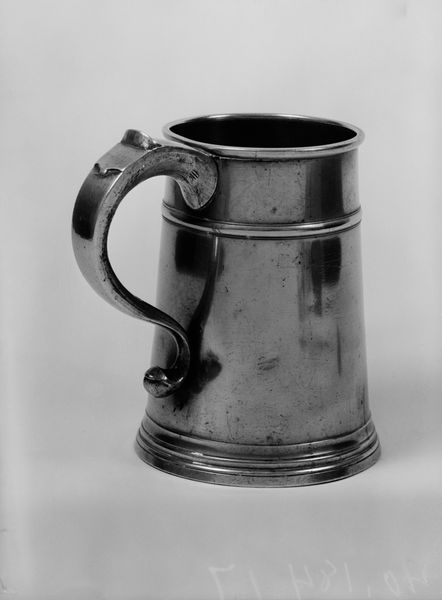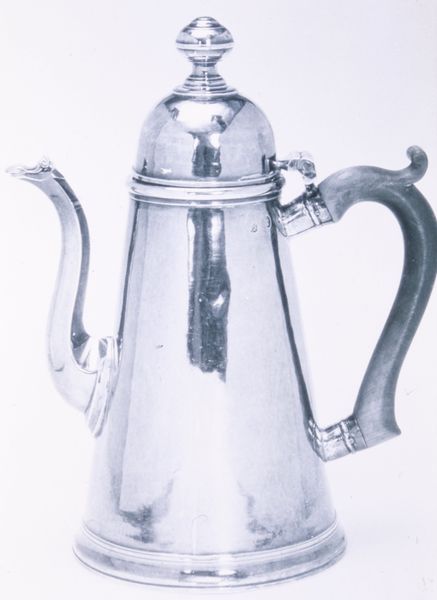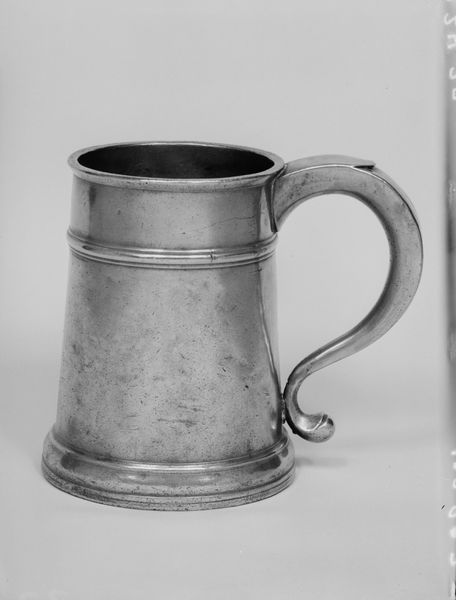
ceramic, glass
#
ceramic
#
glass
#
stoneware
#
ceramic
Dimensions: H. 8 7/8 in. (22.5 cm); Diam. 4 in. (10.2 cm)
Copyright: Public Domain
Curator: That pitcher is surprisingly elegant, even in its muted palette. It really showcases how even functional objects can possess beauty. Editor: Elegance, sure, but my first impression is that the shifting gradations and slight distortion are fascinating – a visual metaphor for uneven distribution of resources. Curator: Well, before we get ahead of ourselves, this is "Water Pitcher", attributed to the Mount Washington Glass Company, made somewhere between 1885 and 1890. Predominantly glass. I think we can consider its purpose beyond just aesthetics. Editor: Purpose is inherently intertwined with social function. The materials, glass especially, signify both luxury and fragility during the Industrial Revolution, and labor exploitation. Whose water was poured from it? Curator: Let’s stick to its craftsmanship. Notice the gradation in color; that was no accident. Someone deliberately engineered this gradient from top to bottom. How does this type of glass work contribute to the aesthetic of the late 19th century, and what specific technical expertise might this company employ? Editor: We can't ignore the consumerism fueling production, though! To create an illusion, one requires particular technology – the labor in developing these methods should give rise to questions, what glassmakers of this era – typically migrants and women – were exposed to through industrial conditions, etc.? Curator: A fair question. Still, consider the texture around the base, those subtle waves, achieved through the glass-blowing process? Its imperfections create individuality. It gives each one a unique texture which might otherwise look mundane. Editor: Individuality for whom? It caters toward certain classes benefiting from mass-production, reinforcing divides… It's hard to overlook. I appreciate its aesthetic, yet I want to hold space to consider who *didn’t* enjoy such privileges! Curator: I agree. Appreciating technical skill isn't an endorsement. Understanding who benefits – and who doesn't – makes appreciating pieces of history more nuanced. Editor: Exactly. Let’s embrace history and all of its tangled complexities and reflect upon it, because art always exists in conjunction with something larger.
Comments
No comments
Be the first to comment and join the conversation on the ultimate creative platform.
